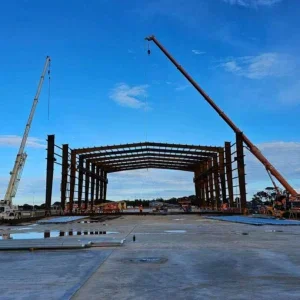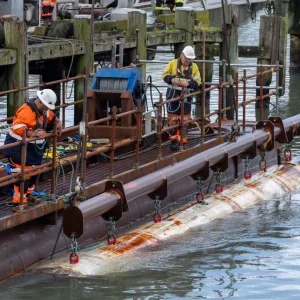The local authority’s Shetland Short Crossings Project is aimed at replacing the region’s ferry fleet, which has an average age of more than 30 years, and connecting all the main islands by either a tunnel or a new ferry.
The council will discuss the issues with secretary of state for Scotland Alister Jack. Discussions are ongoing with the Scottish government.
The council says five of Shetland’s nine outer islands must continue to be served by a ferry, which will involve replacing existing vessels, but four islands – Bressay, Whalsay, Yell and Unst – would be better served by subsea tunnels.
In its document “Shetland Forward”, the council says tunnels provide benefits over ferry services, including a lower whole-life carbon footprint; a lower whole-life cost; speed and reliability of crossing, providing economic and social benefits; and wider economic impacts such as space industry, aquaculture, renewables and tourism. ?

The four tunnels would connect the mainland to Yell; Yell to Unst; the mainland to Whalsay; and to Bressay.
“The importance of the interisland transport network to life in Shetland cannot be overestimated,” said the council’s political leader, Cllr Emma Macdonald. “It is the very definition of a lifeline service, and is the social and economic backbone of the islands.
“However, there are a handful of vessels which are already operating past their intended lifespan. If they are not replaced now, either by tunnels or new ferries, there is a material risk to lifeline services to Shetland’s islands.”
Various funding options are being explored. Discussions are ongoing with the UK government to assist with the tunnels to the north isles which would connect the mainland with the SaxaVord Spaceport, and with the Scottish government to assist with the tunnels on the east side.
“We understand that any project to replace ageing ferries with new vessels, or with tunnels, cannot be expected to be solely the responsibility of central government. Just as our islands’ incredible energy resources should be a shared benefit between Shetland, Scotland and the UK, the transportation between those islands should be a shared cost,” said Macdonald.
In March, Shetland Islands Council committed to spend up to £700,000 on developing business cases and further work on the project.
Shetland’s inter-island ferry service has 12 vessels sailing around 70,000 times a year to nine islands, carrying roughly 750,000 passengers.







